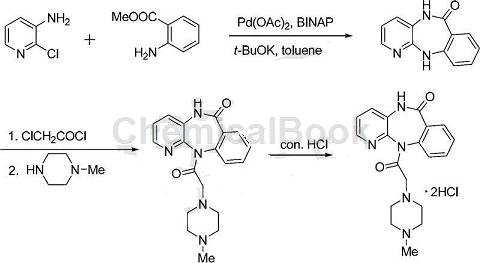Background and overview[1]
Because liquid crystals have many unique properties, they are increasingly used in information display technology and the chemical industry. Replacing one or two hydrogens in the liquid crystal core with fluorine atoms can effectively reduce the viscosity of the liquid crystal and improve the chemical and photostability. Using fluorine atoms to replace the atoms on the flexible side chains connected to both ends of the liquid crystal core has also achieved ideal results. . Fluorine-containing liquid crystal has become the mainstream of TFT liquid crystal display. It has been reported that liquid crystal compounds containing perfluorobenzene rings have low phase transition temperature, high clearing point, low viscosity, wide liquid crystal phase transition range, high birefringence, good chemical stability and good fat solubility, and are widely used. Liquid crystal material in the foreground. Liquid crystals containing 2,6-difluoro-p-methoxybenzonitrile fragments are low-temperature liquid crystals with low driving voltage, fast response speed, and wide phase transition range. The latter uses fluoro-p-hydroxybenzonitrile as an intermediate. The predecessor of this intermediate is difluoro-p-methoxybenzenedehyde. It has been reported that it was prepared from 3-5-difluoroanisole through a four-step reaction. 2 , 6-difluoro-p-methoxybenzonitrile, but its route is long, the conditions are harsh, and the cost is high, so simpler synthesis methods are still being sought.
Preparation[1]

The preparation of 4-methoxy-2,6-difluorobenzonitrile includes the following steps:
Step 1: Preparation of 4-methoxy-2,6-difluorobenzaldehyde:
Add 5-10ml benzene, tetrahydrofuran or toluene and 9.58mmol 3.5-difluoroanisole into the reaction bottle, cool it with a dry ice-acetone bath, gradually add 10-20mmol butyllithium dropwise, stir for 0.5h, and then Add 10-20mmol DMF dropwise and continue stirring for 0.5-2h. Raise to room temperature naturally, add 30 ml of saturated NaHCO 3 aqueous solution, extract three times with 20 ml of diethyl ether, and pass the ether layer through anhydrous MgSO 4 or CaCl 2 After drying, filter and remove the solvent to obtain the crude product. 1.2g of product was obtained by column chromatography, with a yield of 71%.
Step 2: Preparation of 4-methoxy-2,6-difluorobenzonitrile
Dissolve 2.32mmol 4-methoxy-2,6-difluorobenzaldehyde in 10ml benzene, pass in dry NH 3 (1-3 bubbles/second) for 10 minutes, and gradually add Pb(OAc) 4 5-9mmol, stop passing NH 3 after adding, and continue stirring for 1-10 hours. Add 50 ml of diethyl ether to extract, filter, and wash the filtrate with 10% HCl aqueous solution, then wash with water 1-3 times, wash with saturated NaCl aqueous solvent until neutral, and anhydrous Na 2SO 4 Dry and remove the solvent to obtain 0.37g of the product 4-methoxy-2,6-difluorobenzonitrile, with a yield of 94%.
Main reference materials
[1] CN1190093. Synthesis method of 4-methoxypolyfluorobenzonitrile

 微信扫一扫打赏
微信扫一扫打赏

